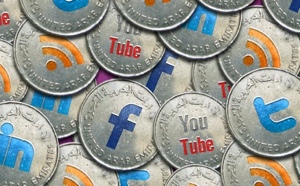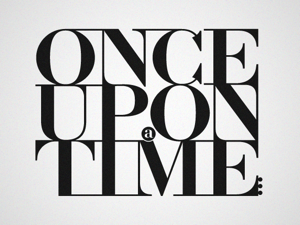
6 min read
Word of mouth marketing is one of the most powerful devices in launching any new communication strategy. This is something well known but not so easy to actually create. You can spread your message in a number of ways; putting up posters, taking out a large ad, tweeting about it etc. however these messages will only ever touch a small percentage of your overall target audience. What you want is for the people that do see your messages to not only absorb your message but share it with a friend. But how do you get them to do this?
It is this question that lead me to read a great book called Contagious: Why Things Catch On by Jonah Berger. Now for those of you out there who haven’t heard of Berger, he’s a pretty interesting guy and a bit of a guru on this subject. Having spent the last decade researching this topic and teaching it at the University of Pennsylvania I figured Berger's point of view was pretty good place to start.
In his book, Berger argues that there are six factors at play that make your message “contagious” - something so good and shareable that the recipient of the message can’t help but spread the news. Each factor has it’s own value and not all need to be used at once, but a careful mix can hit the spot just right if you want people to spread your message on your behalf.
1. Play up to social currency.
 People only share information that makes them look good or makes them look interesting - this is social currency. You can create social currency with the type of message you use or by making your product seem exclusive.
People only share information that makes them look good or makes them look interesting - this is social currency. You can create social currency with the type of message you use or by making your product seem exclusive.
A great example of this is the spreading trend of speakeasy style restaurants in cities like London and New York. Thinking that something is a secret makes people feel special, and more compelled to tell someone about it. And while this might seem wildly removed from the way you would tell your employees about a new employee benefits program, think about how you could use this when you are next planning an employee event. If people think there is only limited space, it could supercharge your turnout.
2. Use triggers.
 This is where you can place something in the natural environment of your target audience that triggers them to remember your message. This doesn’t have to be wildly crazy, it could be as simple as giving them something that they would naturally keep on their person (e.g. pens) or using images in messaging that recreate the scenario the product would be used in. Be careful here though - you want to ensure that your message is triggered at a moment when the recipient could act on their sudden memory.
This is where you can place something in the natural environment of your target audience that triggers them to remember your message. This doesn’t have to be wildly crazy, it could be as simple as giving them something that they would naturally keep on their person (e.g. pens) or using images in messaging that recreate the scenario the product would be used in. Be careful here though - you want to ensure that your message is triggered at a moment when the recipient could act on their sudden memory.
3. Use emotion.
 People share information that provokes a strong positive emotion, such as awe, inspiration, humour or delight.
People share information that provokes a strong positive emotion, such as awe, inspiration, humour or delight.
(It’s also worth noting that strong negative emotions such as shock, anger or disgust can also have the same effect but I’m imagining that most people in our profession probably won’t be aiming for those!)
Berger uses a great example here of the series of promotions Google have done over the years using emotion in videos that demonstrate the features of their products. He quotes their Parisian Love advert however personally I am more of a fan of the later version that was created with The Cambridge Satchel Company. I still think of Google pretty much every time I see someone using a satchel (hey, I guess that’s a trigger there too!).
4. Make it public.
 The problem with getting people to use most products or services is that most of the time they don’t know if anyone else is also using the product. Us humans are fickle creatures and we like to be reassured by the actions of others and use this as a basis when making a choice.
The problem with getting people to use most products or services is that most of the time they don’t know if anyone else is also using the product. Us humans are fickle creatures and we like to be reassured by the actions of others and use this as a basis when making a choice.
Ever walked past a restaurant with a great menu just because there’s no one inside?
The same will be true for any new employee benefits initiatives you roll out internally within your organisation. This is when using your success figures, such as hitting key milestones, or case studies of how much others have benefitted from the product can have a huge impact. Here at RG we’ve often also had great success with creating ‘champions’ within the workforce who can go out and promote the product - look out for more of this to come in future.
5. Make sure it has practical value.
 Demonstrate how using your product or programme is going to benefit your target audience. This is where employee benefits products can really shine, as most of the time they really will be there to save employees money, improve their health or generally make their lives easier. Finding the right ‘practical values’ for the individuals you’re marketing to is where this can get a bit trickier, as not all of your employees will be interested in the same things. Are the lads in the warehouse going to be interested in saving 10% at Reiss?
Demonstrate how using your product or programme is going to benefit your target audience. This is where employee benefits products can really shine, as most of the time they really will be there to save employees money, improve their health or generally make their lives easier. Finding the right ‘practical values’ for the individuals you’re marketing to is where this can get a bit trickier, as not all of your employees will be interested in the same things. Are the lads in the warehouse going to be interested in saving 10% at Reiss?
Sometimes it can be more useful to split your communication strategy into different strands for different areas of the workforce. This way you can ensure that your message is going to be useful to the recipients.
6. Tell stories.
 This one is simple. People don’t just share information, they like to share stories. If you can turn your message into a narrative then people will find themselves sharing it. Berger refers to this practice as using a ‘Trojan Horse’ and while it is a great idea I was initially baffled at how I could use this to help sell employee benefits to some cynical employees.
This one is simple. People don’t just share information, they like to share stories. If you can turn your message into a narrative then people will find themselves sharing it. Berger refers to this practice as using a ‘Trojan Horse’ and while it is a great idea I was initially baffled at how I could use this to help sell employee benefits to some cynical employees.
That was until I realised that we tell stories accidentally all of the time. While sat talking over lunch, on the bus to work, general chit chat to pass the time - without realising we’re always telling stories. This is another example where sharing case studies and run “Julie in Boston thought…” type messaging becomes suddenly very powerful.
So what can we learn from all of this?
You can run rings around yourself trying to tell the world about your idea but word of mouth is still the most powerful way to get someone to try something new. There are many ways that we can influence, change and grow our own word of mouth and if you’d like to find out more I’d strongly recommend giving Berger’s book a read of your own - it truly is fascinating.




